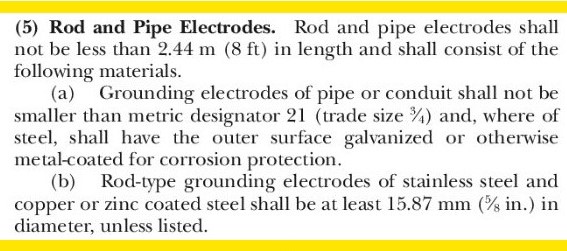![]()
Can you Run a Generator without Grounding it?
DISCLAIMER: AS AN AMAZON ASSOCIATE I EARN FROM QUALIFYING PURCHASES. THIS POST CONTAINS AFFILIATE LINKS THAT WILL REWARD ME MONETARILY OR OTHERWISE WHEN YOU USE THEM TO MAKE QUALIFYING PURCHASES. FOR MORE INFORMATION, PLEASE READ MY EARNINGS DISCLAIMER.
Although generators will provide us with the emergency power we need, many people who use them have no idea what they are capable of. This can lead to burns, electrocution, and even death.
Excess energy is displaced by grounding the engine, which stops people from getting shocked or electrocuting themselves. Grounding is usually done by the means of the grounding rod, which is a long copper rod with a circumference of eight feet (It’s generally advised that it should be at least five eights of an inch in diameter).
You may not need to ground your generator if you intend to plug appliances directly into it with extension cords. Only make sure that all of the generator’s components (fuel tank, compressor, generator casing, and power receptacles) are bonded to the generator’s frame.
The grounding rod is replaced by the generator’s base, this is the case and if the errant energy occurs, it would be grounded by the frame of your generator. As always, If you’re not sure if you need a grounding rod for your generator, speak with a certified electrician.
Grounding is not needed for most modern generators. Any older generators, however, can also need grounding before use. The best way to determine whether or not your generator has to be grounded is to check the manufacturer’s manual.
Needed tools for grounding
- Copper wire. To connect the grounding rod to the generator post, use a high-quality copper cable.
- Wire strippers are used for removing the insulation from the copper wire.
- A hammer. To drive the copper rod into the ground.
- Pliers are used to firmly wind the copper wire around the grounding rod.
- Wrench to remove and secure the grounding bolts on the generator.
- Protective clamps (or fittings). To use on certain sections of the ground rod that are above ground.
- The ground rod itself. Here are NEC specifications (NEC 250.52 (A)(5)) grounding rod must be at least 8 feet long and 5/8 inch in diameter. Stainless steel, nickel, or zinc-coated steel may be used.
Installing the ground rod
If the surface is dry, use a mallet or a hammer to drive the ground rod into the ground. If the ground is very rough, you can use a sledgehammer. You may also soften the surface with water before hammering the copper rod into the dirt.
At least 8 feet of the rod should be in touch with the ground. If the rock bottom prevents you from doing so, mount the rod at a 45-degree angle.
The grounding rod must be buried in a trench (a hole) that is at least 30 inches long. Regardless of rod diameter, any remaining above-ground sections must be protected with a protective clamp or fitting.
Using the wire strippers, remove a portion of the insulation from the grounding copper wire. Using pliers, closely wound this copper wire around the grounding copper rod. Now, locate the generator’s grounding bolt. With a wrench, loosen it. Tighten the bolt after wrapping the copper grounding wire around it.
Here is a video on grounding a generator:
![]()
Should you ground a generator?
Here is a good educational video on grounding (watch everything, you will not be sorry):

Click on the white button above to find your electrician!




